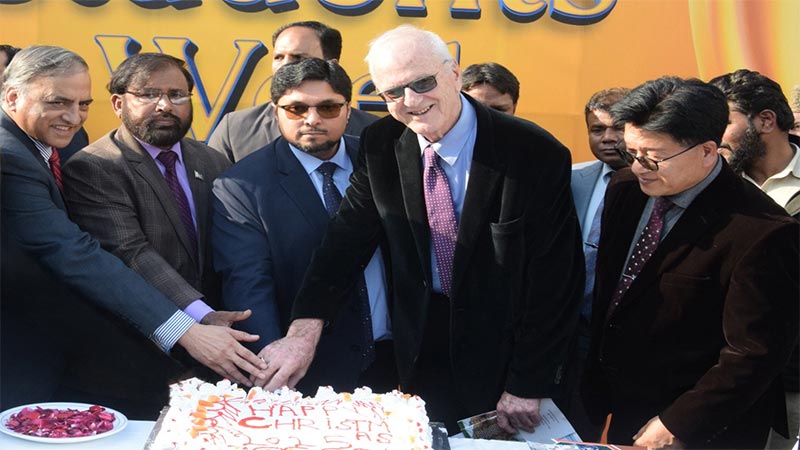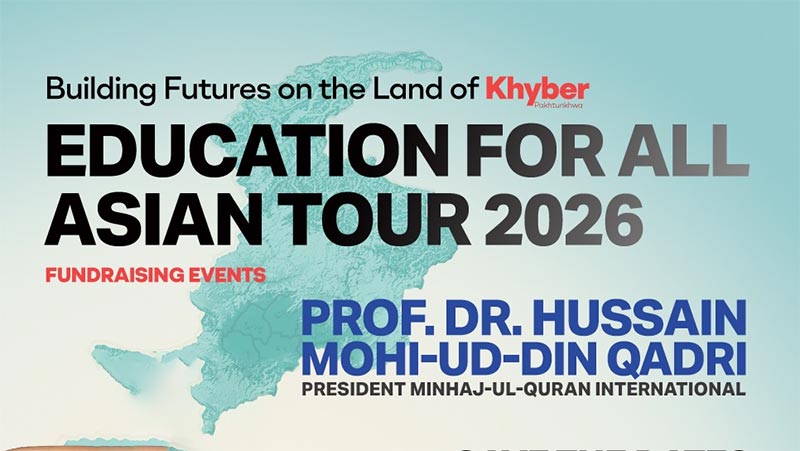What ails Muslims in China?
This Article was published in
The Frontier Post (April 23, 2010)
By: Sahibzada Hussain Mohi-ud-Din Qadri
There are varying figures on the number of total Muslim population currently residing in different parts of China. According to information for the years 1912-49, they were said to be around 50 million but subsequent data in 1990 placed the total number of Muslims at around 17 million due to their migration to neighbouring Central Asian Republics and influx of Han Chinese promoted by the government. Muslim population in China may be divided into two large groups: Hui—- who are descendents from Central Asian, Arab, and Persian Muslim immigrants who intermarried with Han Chinese and Turkic Muslims of China’s Western province. These include Uighur, Kazak, Tajik, and Kyrgyz groups.
Muslims of Turkic origin primarily live in Xinjiang (“the new frontier,” in Chinese). The area is in the middle of Kazakhstan, Mongolia, Kyrgyzstan, Tajikistan, Afghanistan, and Pakistan. The landmass of Xinjiang is one-sixth of all of China. The population of Xinjiang includes the non-Muslim Han and various groups of Turkic Muslims (the Uighur, Kazakh, Kyrgyz, Uzbeks, and Tartars). The Uyghurs are reported to be largest group. Xinjiang has plenty of natural resources, including precious minerals, coal, and petroleum. Confirmed oil reserves are “expected to reach 6.5 billion tons, along with billions of cubic meters of natural gas.” The record of the Uighur independence is intermittent. It was marred by conquest by the Mongol and then by the Manchus. After conquering China, the Manchus invaded Eastern Turkistan in 1759 and ruled it until 1862. The Eastern Turkistanis (Uyghurs) with the help of the Ottomans expelled the Manchus in 1863. The Uyghurs briefly established the independent state of Eastern Turkistan. China, with the help of Britain, regained control of Eastern Turkistan in 1877. The area was formally annexed to China in 1884 and given its present name, Xinjiang.
The Uyghurs have not only maintained their religious identity throughout the long occupation by China, but also kept alive their aspiration to become independent once again. Traditionally, Muslim groups in China have maintained their distinction from the mainstream Han population, largely as a result of their affiliation with Islam. Although the Hui became more assimilated into the Han culture than their Turkic counterparts, they still maintained their separate religious identity. The cultural differences between the Han and Chinese Muslims (especially Uyghurs) are acute and may not be reconciled, since the Chinese political regime inhibits cultural and political pluralism. Thus, ethnic and religious minorities who wish to maintain a separate identity undergo repression and hardship to sustain their very existence. The regime strives to assimilate them into the mainstream Han culture. The Han social order gives primacy to a Chinese society “founded on the political, social, and religious premises of filial piety and the Confucian ancestor cult.” Chinese Muslims did “not accept the Confucian formulation of state and society.” Muslims “remained alien to the larger culture while their shared faith led them to identify deeply with the larger world community of Islam, the universal Ummah.” Because of their unique religious perspective, Muslims were “scorned by Confucian society,” and they, in turn, “turned more to their faith as a basis of their identity.” The north-western and south-western parts of China experienced Muslim unrest in the latter half of the 19th century. Until the communist takeover of 1949, the general attitude of the various Chinese governments toward Muslims of China oscillated “between a policy of assimilation and one of autonomy that resulted in hardship for the Muslims and their continued mistrust of the Han administrations. In the early years after the communist takeover, during the relaxation phase of the Hundred Flowers era in the PRC, a number of secessionist Muslim rebellions erupted. China’s Muslims had to suffer during the Cultural Revolution in the 1960s.
As a result, many fled to the Turkic regions in Soviet Central Asia. The Shadian Incident that unfolded in 1967 led to the closing down of several mosques and burning of Muslim religious books. This incident formed part of a larger attempt to wipe out what the government termed the Four Olds-old ideas, old culture, old customs, and old habits. Muslims in China, like Marrano Jews under the Spanish Inquisition, “prayed in secret at home. Their children pursued their study of the Quran with their imams (Akhonds) in the evenings.” Despite the repression, even the fasting in the Muslim holy month of Ramadan was observed. Conflicts between the Han and Muslims escalated when the latter were compelled to eat pork. According to some reports, “abominable acts of anti-religious coercion were perpetrated when pork bones were thrown into wells in order to pollute irretrievably the drinking water.” Official reports say 1,600 Hui Muslims were massacred and 4,400 Hui homes were destroyed in July 1975. A document entitled “Circular of Rehabilitation to the Shadian Incident” stated that this incident should not have been dealt with as a “counterrevolutionary rebellion.”
The circular admitted that the use of military force was “wrong” and declared that “the many leaders and the people of Hui nationality who were involved in this incident should be rehabilitated.” The Chinese government also provided economic assistance to widows and orphans of this brutal phase. In 1987, the party committee of Yunnan “rectified the previous records” and exonerated the leaders of the rebellion “from being treated as counterrevolutionaries.” Nonetheless, after the emergence of five independent states in Central Asia in the early 1990s, many Muslims in Xinjiang Province harbour their own aspirations of independence. Moreover, the success of Afghans against the former Soviet Union has palpably encouraged the Islamist groups of Xinjiang.
The increased politicization of Uyghurs in Xinjiang has caused a great deal of concern in China. The PRC has sought reassurances from the Kazak and Kyrgyz governments and signed several agreements ensuring border security. Despite these agreements, the PRC leaders remain wary of the potential escalation of Islamic resurgence in the Muslim regions of their own country due to the continuing war in Afghanistan and the political instability in Tajikistan. There have been frequent reports of clashes between Uighur separatists and Chinese government forces. The most notable clash was the so-called Pinavuanjie Assault in 1992. The Chinese authorities, like their Soviet counterparts in previous decades, described this incident as a battle with gangster groups. However, since the clashing forces were identified as Hui Muslims, one cannot rule out that this event was related to the separatist activities. A year later, skirmishes and turmoil broke out in 12 counties of Xinjiang.
There was also a report of increased clashes between Chinese security forces and Uighur Islamist separatists in Xinjiang in January 2000. How China deals with these developments within the Xinjiang Province will also affect the course of political stability and economic development in that province. If the past behaviour of the Chinese leadership continues toward political dissent then Xinjiang Province would only edge toward increased political turbulence and instability.




















Comments